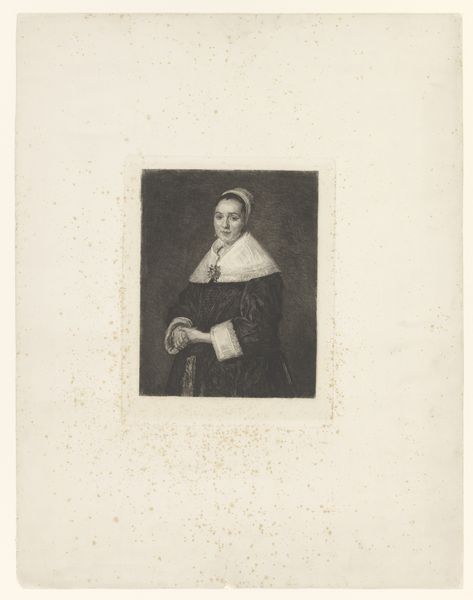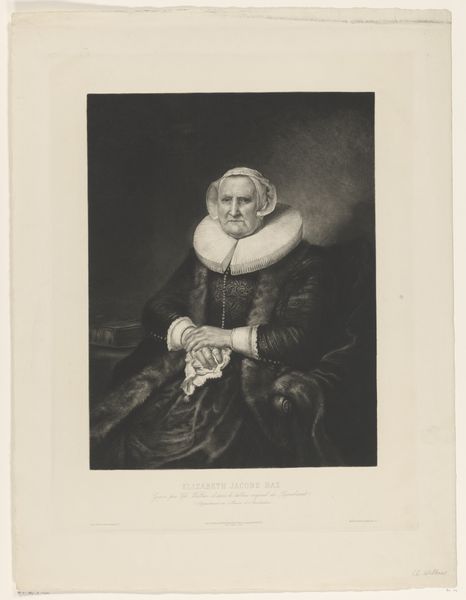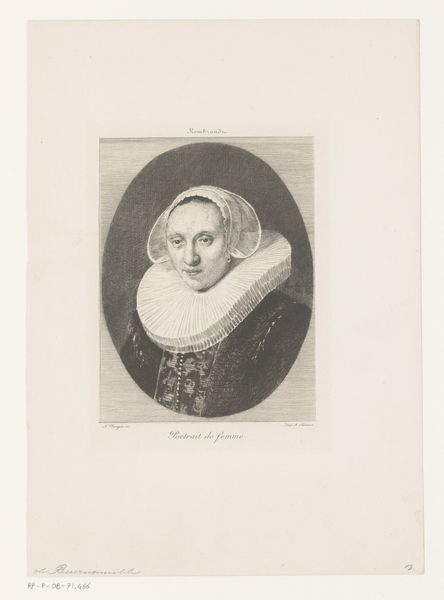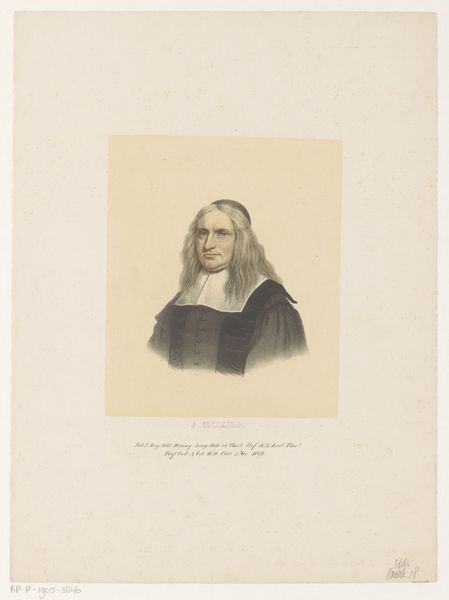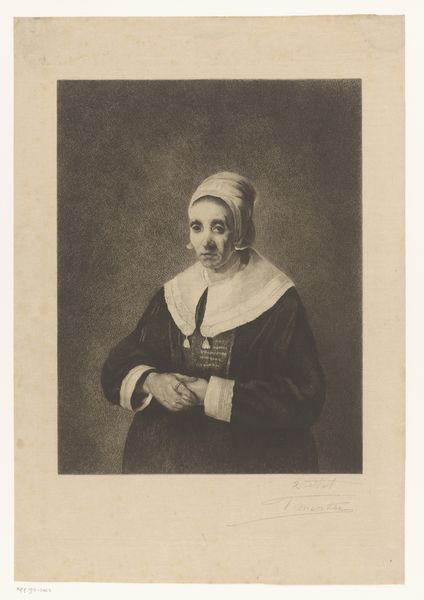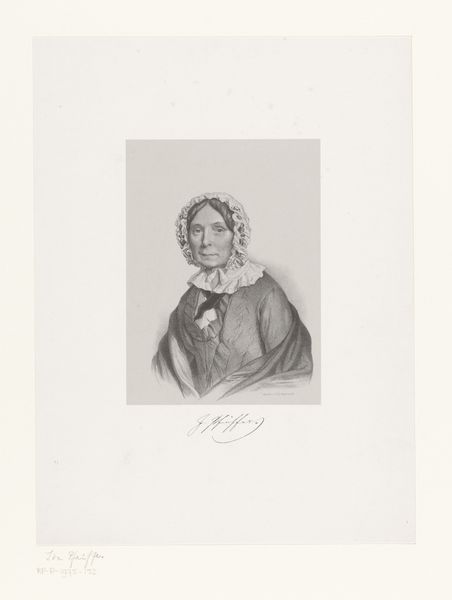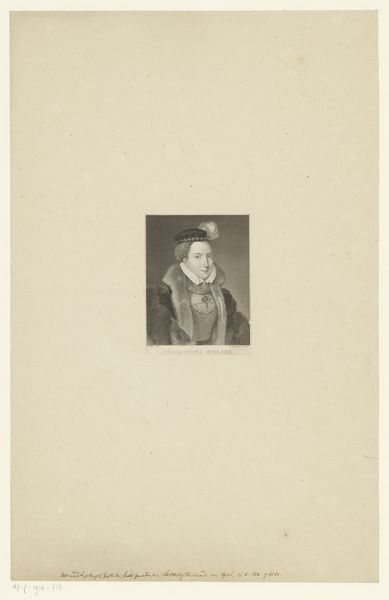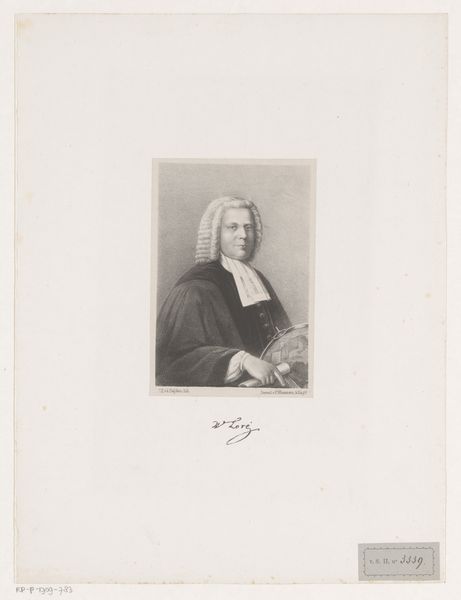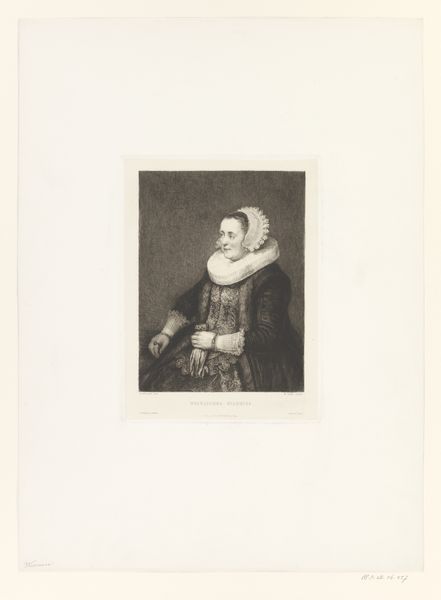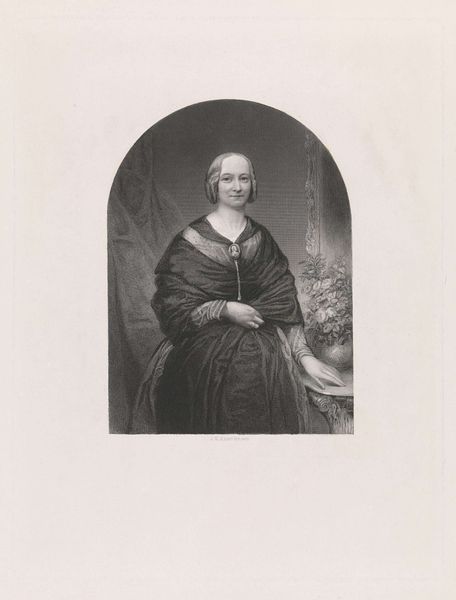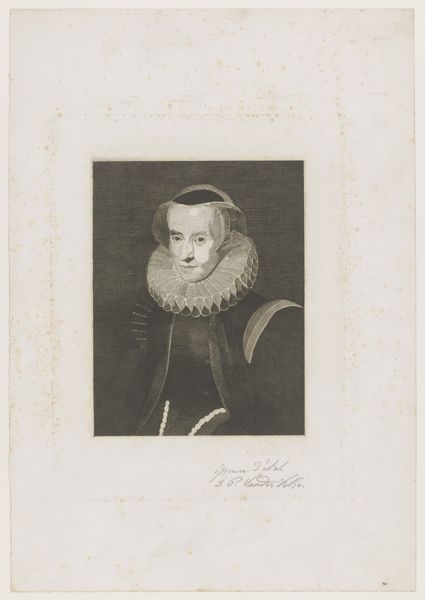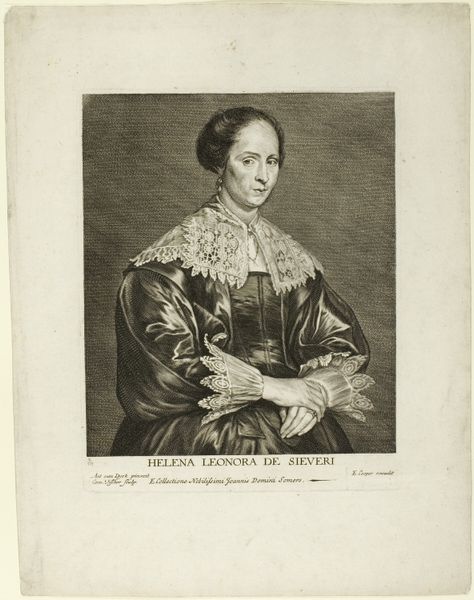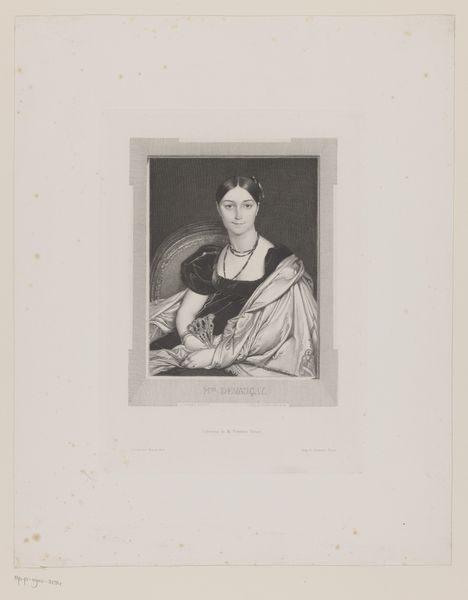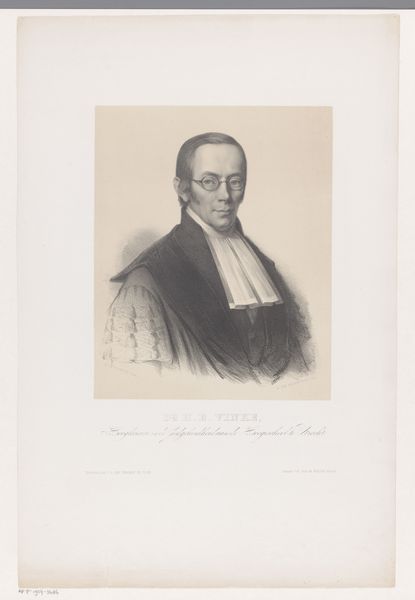
drawing, print, etching, graphite
#
portrait
#
pencil drawn
#
drawing
#
light pencil work
# print
#
etching
#
pencil sketch
#
graphite
#
pencil work
#
realism
Dimensions: height 201 mm, width 159 mm
Copyright: Rijks Museum: Open Domain
Curator: Let's spend a moment with Emile Boilvin's "Portret van een vrouw met handschoen," created in 1873. It's an etching, based on the look of the work seemingly done in graphite. Editor: She appears reserved, doesn't she? Very proper. The kind of woman who knows exactly what silverware to use for which course. All those etched lines make her clothing appear both textured and quite flat. It almost neutralizes her figure. Curator: The etching technique does lend a particular quality. Think of the artist meticulously layering lines, essentially translating texture into tonal values. This almost obsessive method, it has a material consequence too, with labor taking center stage, and it highlights her affluence, as creating etchings was intensive in both skill and materials. Editor: Affluence signified, yes, but there's something about the mass-reproducible nature of prints and etchings that makes me think about the art market, too. An accessible artwork in terms of process as opposed to commissioning her painted portrait, but maybe more widely accessible for buyers to acquire. Does this say something about Boilvin as an artist of his time? Curator: Absolutely. He's navigating this fascinating intersection of art and commerce. The hand remains present in creating the plate. You get this delicate, almost ethereal quality. Think about the paper itself, too – the weave, the weight… the tactile pleasure for the collector. Each stage in its production, even the biting and bathing of the plate—there’s such alchemy! Editor: It is lovely to consider those stages and material aspects. It's true that Boilvin managed to suggest depth with these etched lines but in turn this etching also presents her like a silhouette on a page. An absence, a presence both. Curator: So wonderfully put. It reminds us that every mark, every choice of material and process, carries layers of meaning – cultural, social, personal. Editor: Definitely. Looking again I am really interested in how we come to regard work like this—where process speaks. Perhaps the woman, while buttoned up tight by all those rules of etiquette, carries with her all that weight in materiality and meaning. Curator: Right, she's framed now for her access but perhaps, paradoxically, liberated through process too.
Comments
No comments
Be the first to comment and join the conversation on the ultimate creative platform.
